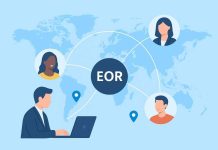In today’s fast-paced business environment, keeping up with the trends requires continuous learning and skill development. Employers are increasingly realizing the value of investing in their staff’s growth. To facilitate this, companies are turning to Learning Management Systems (LMS) to streamline and enhance their training initiatives. One standout option among the LMS platforms is Salesforce LMS. This article explores how leveraging Salesforce LMS can effectively boost learning and development within companies.
1. Centralizing Training Programs
As organizations accumulate an array of training resources, maintaining a repository for all learning materials can prove challenging. By implementing Salesforce LMS, businesses gain access to a platform where employees can easily find content like online courses, videos, articles, and webinars. This simplifies resource discovery for employees and streamlines content management tasks for trainers or administrators overseeing course updates.
2. Tailored Learning Journeys
Utilizing Salesforce LMS empowers organizations to craft learning and development paths tailored to employees’ roles, expertise levels, and career aspirations. Leveraging user profiles and data tracking functionalities enables the system to provide targeted recommendations and custom content suggestions for each learner based on their needs.
By tailoring learning experiences to needs, companies enhance employee engagement levels and help them acquire relevant skills and knowledge that support their career objectives.
3. Collaborative Environment
Effective training initiatives often depend on teamwork between learners, instructors, or peers. Through Salesforce LMS, learners can collaborate using features like discussion boards and chat functions within the platform. They can ask questions and seek clarification from experts or colleagues, fostering engagement and promoting knowledge sharing and teamwork.
4. Monitoring Progress and Reporting
Assessing the impact of training programs is crucial. Salesforce LMS offers reporting tools for organizations to track learner progress, evaluate course feedback, and pinpoint areas for enhancement. Administrators can analyze completion rates and assess training effectiveness on employee performance through reports helping companies refine their learning strategies based on data insights.
5. Seamless Integration with Salesforce Tools
For businesses utilizing Salesforce applications like CRM or HR systems, integrating Salesforce LMS provides a solution that streamlines operations across different functions within the organization.
By connecting these systems, companies can use existing user information to tailor learning experiences without the need for employee orientation efforts or data syncing across various platforms. This integration also enables businesses to align learning and development initiatives with objectives and assess the return on investment of their training programs.
6. Making Learning Engaging through Gamification
Salesforce LMS integrates game elements into its platform, making the learning and development process more stimulating and captivating for employees. Features such as leaderboards, badges, points, and rewards foster an atmosphere that stimulates engagement and encourages learners to strive for higher scores or complete more courses. Gamification does not inject an element of enjoyment; it also boosts knowledge retention through interactive quizzes or challenges.
7. Accessing Learning Materials Anytime, with Mobile Accessibility
In today’s mobile-centric environment, accessing training resources while on the move is essential. Salesforce LMS provides accessibility, enabling learners to interact with courses and materials from their smartphones or tablets. This flexibility empowers employees to learn at their pace regardless of their location, allowing real-time access to learning when it suits them best. Whether during a morning commute or downtime on a business trip, learners can progress in their journey unhindered.
8. Continuous Learning Beyond Traditional Training
Learning should not be limited to training programs. Salesforce LMS offers learning and development support through options like microlearning and on-demand resource access. By using modules or quick guides, learners can easily absorb relevant information to assist them in their daily tasks. This method improves knowledge retention and ensures that employees have resources available when they encounter challenges or start new projects.
In Summary
Utilizing a Salesforce Learning Management System presents opportunities for organizations looking to enhance employee learning and development. The integration of content-customized learning paths, collaboration tools, progress monitoring features, and seamless integrations provides a solution that effectively aligns training initiatives with business requirements. Embracing technology-driven solutions such as Salesforce LMS equips organizations to cultivate a culture of growth while benefiting from a workforce equipped with current knowledge and abilities.











